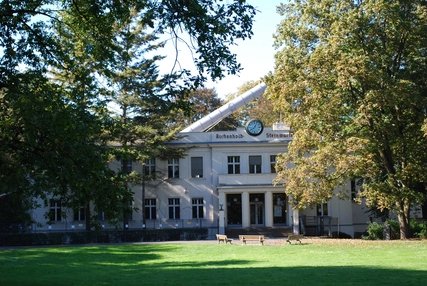
We have had to wait two years for the Zeiss-Großplanetarium to reopen and 25 August is the big day! Finally!
Berlin's biggest planetarium has been given a fresh start with a completely renovated facility, new content, and a new star projector. And I'm looking forward to going on 3-D journeys through the universe, made possible with the very latest digital technology!
Not only will outer space be the only show: The Zeiss-Großplanetarium is also turning its attention to more earth-bound topics such as biology, chemistry, and medicine. For example, Darwin's theories of natural selection will be given a closer look. I'm looking forward to it!
Tracking the Stars in Berlin
In addition to the Zeiss-Großplanetarium, Berlin is also home the Wilhelm-Foerster-Observatory with Planetarium at Insulaner and the Archenhold-Observatory in Treptow, recently merged to create a single foundation. Looking for your best spot for stargazing?
First, you should decide what you'd like to see: Planetariums simulate a starlit sky, while observatories let you see real celestial bodies.
If your goal is an overview of astronomy or you are interested in scientific programmes, then the Zeiss-Großplanetarium is your best bet. And from the outside, it looks particularly great with a gleaming dome that's a real eye-catcher. It's been a part of the Prenzlauer Berg cityscape for almost 30 years now. This Berlin planetarium opened in East Berlin in 1987, just in time to mark the city's 750th birthday after only two years of construction. It was one of the largest and most modern planetariums in Europe then! And that's exactly where it wants to head again.
A fully renewed programme with scientific themes launches 25 August
A place for further education and for children or school classes can be found in the Wilhelm-Foerster-Observatory on Insulaner. When I first went there, I expected to get a view of Berlin from atop the Insulaner, made of rubble after the Second World War, piled up 78 metres high. It has since become forested and you can now only catch a glimpse of Schöneberg through the trees. But the view up above has not been overgrown, making it the perfect location for the observatory that has been open to visitors since 1963. There is also a planetarium at the foot of the hill.
Guided tours at the observatory and diverse children's programmes in the planetarium such as "Film Music under the Stars" or "To Pluto and Back" are on offer each day.

If you're interested in the history and significance of astronomy, you should visit the Archenhold-Observatory. Germany's oldest and largest public observatory has an idyllic setting in Treptower Park and boasts one very special highlight: the longest telescope in the world (21 metres long), dating back to 1896. And it has welcomed famous guests over the years: Albert Einstein held his first public lecture on the theory of relativity here in 1915.
Guided tours are offered on Thursdays at 8pm and on Saturdays and Sundays at 3pm. There are also children's programmes on offer at the weekends. Written by Kathrin Hoffmann
